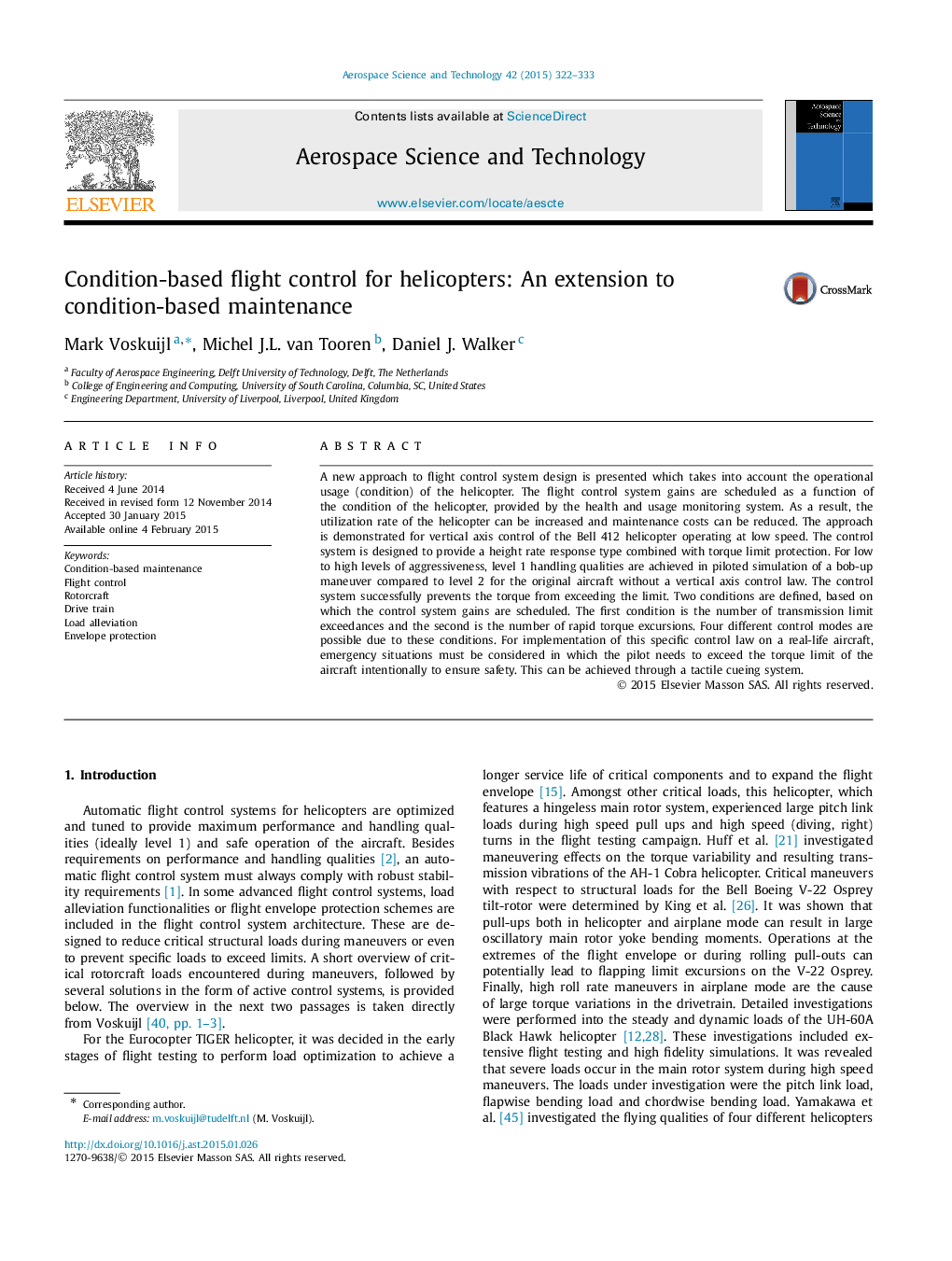| Article ID | Journal | Published Year | Pages | File Type |
|---|---|---|---|---|
| 1717931 | Aerospace Science and Technology | 2015 | 12 Pages |
A new approach to flight control system design is presented which takes into account the operational usage (condition) of the helicopter. The flight control system gains are scheduled as a function of the condition of the helicopter, provided by the health and usage monitoring system. As a result, the utilization rate of the helicopter can be increased and maintenance costs can be reduced. The approach is demonstrated for vertical axis control of the Bell 412 helicopter operating at low speed. The control system is designed to provide a height rate response type combined with torque limit protection. For low to high levels of aggressiveness, level 1 handling qualities are achieved in piloted simulation of a bob-up maneuver compared to level 2 for the original aircraft without a vertical axis control law. The control system successfully prevents the torque from exceeding the limit. Two conditions are defined, based on which the control system gains are scheduled. The first condition is the number of transmission limit exceedances and the second is the number of rapid torque excursions. Four different control modes are possible due to these conditions. For implementation of this specific control law on a real-life aircraft, emergency situations must be considered in which the pilot needs to exceed the torque limit of the aircraft intentionally to ensure safety. This can be achieved through a tactile cueing system.
